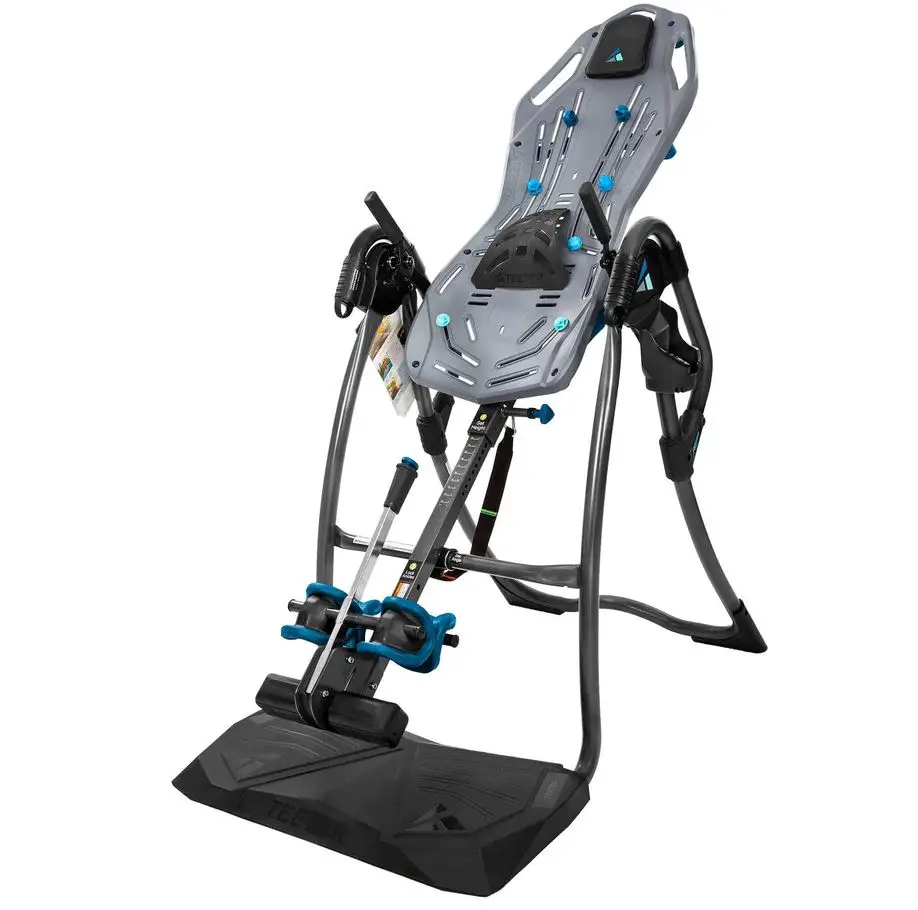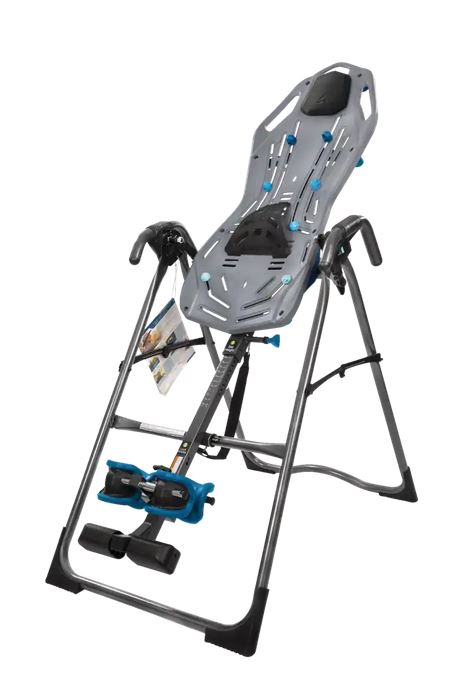Will an Inversion Table help pinched nerve in neck? It is a common question for people who have been unfortunate enough to experience the pain that often comes from having a pinched nerve. A pinched nerve happens when the pressure on a nerve causes nerve stress.

The nerves will get pressed between surrounding tissues such as cartilage, bones, ligaments or tendons, Causes for a pinched nerve include: herniated disk or a slipped disk, stress from work that is repetitive, injury, arthritis, bone spurs, obesity and gender preference where women are more prone to get the condition.
Will an Inversion Table Help the Pinched Nerve in Your Neck?
Inversion Tables are a form of traction and will help about one third of patients with a pinched nerve. The condition is usually caused due to vertebrae compression where your discs have become so pressed together instead of having space between them. An Inversion Table will help your bulging vertebrae discs to relax and relieve the pressure on your spine and neck area.
How Long Should I Stay on The Inversion Table to Relieve My Neck Pain?
Experts recommend that you stay on your Inversion Table for 1 – 2 minutes for twice a day. However, others have said that staying on The Inversion Table for 5 minutes each day will help to significantly relieve neck pain that comes with a pinched nerve. It is best to check with your doctor to see the best amount of time to stay on the table to relieve your pinched nerve..
What is the Weight Capacity of The Inversion Table?
The weight capacity of a normal Inversion Table is 300 pounds. However, there is an extra large Inversion Table that has a weight capacity of 400 pounds.
What Neck Exercises Can I Do on The Inversion Table to Help Relieve My Pinched Nerve?
There are several exercises you can do on The Inversion Table to help with relieving the pain that often comes with a pinched nerve. The balance exercise does not put added pressure on your neck. Balance yourself on the table.
You will elongate and stretch your neck and spine and relieve the pressure and pain. Another exercise is when you try moving your neck from side to side as another way to relieve the pressure on your neck. Also try moving your head and neck in a figure 8 movement to help your neck move in every direction.
The movement of your neck in different directions will help to relax your vertebrae discs, and relieve the pressure on your spine and neck area.
Should I Speak With My Doctor Before Using an Inversion Table?
You should always speak with your personal physician before starting any exercise regimen. Your doctor will approve or disapprove of the Inversion Table and help you get started with understanding how long to be on the table and what exercises will work best for you.
Is Using an Inversion Table Safe for Me to Use?
Yes, an Inversion Table is safe for you to use in relieving pain coming from your pinched nerve. Professionals like doctors, chiropractors, and physical therapists have recommended The Inversion Table as a great alternative way to relieve pain and pressure from your neck pain, herniated disks and pinched nerve.
What Should I Do if My Doctor Does Not Approve of My Using The Inversion Table?
The Inversion Table has been shown to work on about one third of people with a pinched nerve. If you are in the other two third group where The Inversion Table will not work, you will need to look for other ways to relieve the pressure on your vertebrae discs, spine and neck areas. Speak with your doctor for a better medical plan for you.
How Do I Use The Inversion Table?
Begin by setting up The Inversion Table in your home. A store representative can help you with this. Once you have The Inversion Table set up, you will want to have an assistant to be in the room with you while you are on the table.
The maximum amount of time should be 2 minutes for twice a day. Strap yourself on the table while making sure that the straps are secure. You do not want to move on your table and risk minimizing the effect of the exercises you will be doing on the table.
Balance yourself on the table and lay straight with your back on the table to become comfortable with the table. Laying straight on the table will help to elongate and stretch your spine and neck area and relieve the pressure and pain. This is called the balance exercise and is done to improve your posture.
Allow your assistant to help you tip yourself slightly at an angle. You should be doing beginner angles like 10 – 20 degrees until you become more comfortable with the table. Stay at this angle for the maximum amount of time.
Your assistant should have a stop watch set at 2 minutes to ensure that you do not stay on the table longer than required. Once you have completed your 2 minutes at a beginner angle, come back to the straight position on the table so that you can remove yourself from The Inversion Table. Repeat this exercise another time later in the day for maximum results.
These are some common need to know answers to questions that are often asked by patients who are experiencing the pain from a pinched nerve. An Inversion Table is safe for many people who have neck pain. However, experts say that The Inversion Table has been shown to help about one third of patients who have a pinched nerve.
Speak with your doctor to make sure that using the table is a good treatment plan for you. Once your doctor has approved your use of the table, begin slowly and get comfortable with the table. Always have an assistant to help you get on and off the table and to help you tip the table back at an angle that will relieve the pressure from your neck.






